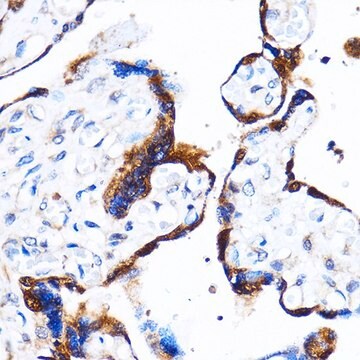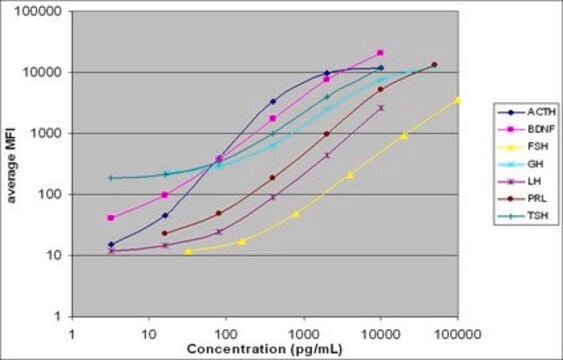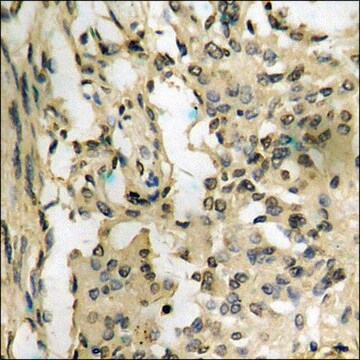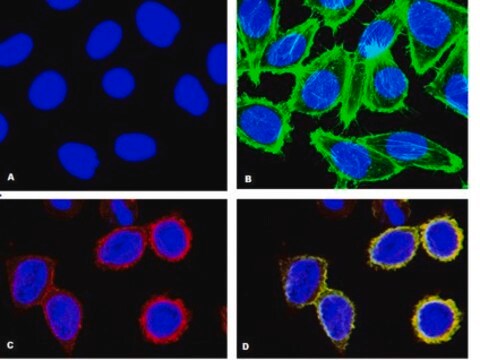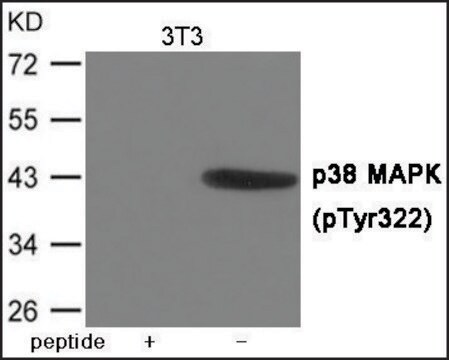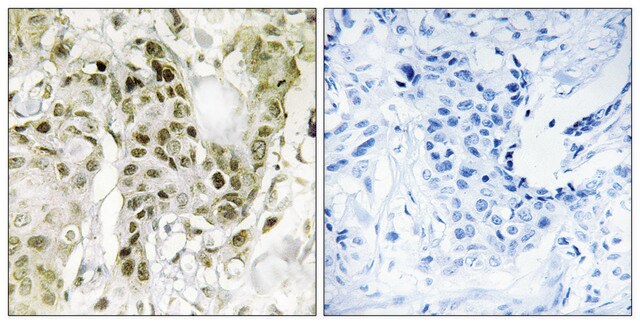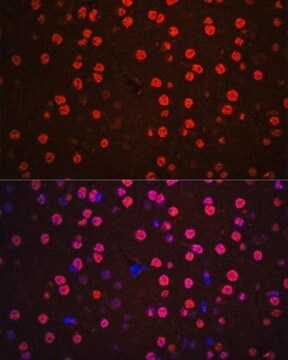MABS64
Anti-phospho-p38 (Thr180/Tyr182) Antibody, clone 6E5.2
clone 6E5.2, from mouse
Sinonimo/i:
mitogen-activated protein kinase 14, cytokine suppressive anti-inflammatory drug binding protein, stress-activated protein kinase 2A, Cytokine suppressive anti-inflammatory drug-binding protein, CSAID-binding protein, MAP kinase MXI2, MAX-interacting pro
About This Item
Prodotti consigliati
Origine biologica
mouse
Livello qualitativo
Forma dell’anticorpo
purified immunoglobulin
Tipo di anticorpo
primary antibodies
Clone
6E5.2, monoclonal
Reattività contro le specie
human, mouse
tecniche
immunocytochemistry: suitable
western blot: suitable
N° accesso NCBI
N° accesso UniProt
Condizioni di spedizione
wet ice
modifica post-traduzionali bersaglio
phosphorylation (pThr180/pTyr182)
Informazioni sul gene
human ... MAPK14(1432)
Descrizione generale
Specificità
Immunogeno
Applicazioni
Signaling
MAP Kinases
Qualità
Western Blot Analysis: 0.5 µg/mL of this antibody detected p38 on 10 µg of Anisomycin treated and untreated HeLa cell lysate.
Descrizione del bersaglio
Stato fisico
Stoccaggio e stabilità
Risultati analitici
Anisomycin treated and untreated HeLa cell lysate
Altre note
Esclusione di responsabilità
Non trovi il prodotto giusto?
Prova il nostro Motore di ricerca dei prodotti.
Codice della classe di stoccaggio
12 - Non Combustible Liquids
Classe di pericolosità dell'acqua (WGK)
WGK 1
Punto d’infiammabilità (°F)
Not applicable
Punto d’infiammabilità (°C)
Not applicable
Certificati d'analisi (COA)
Cerca il Certificati d'analisi (COA) digitando il numero di lotto/batch corrispondente. I numeri di lotto o di batch sono stampati sull'etichetta dei prodotti dopo la parola ‘Lotto’ o ‘Batch’.
Possiedi già questo prodotto?
I documenti relativi ai prodotti acquistati recentemente sono disponibili nell’Archivio dei documenti.
Il team dei nostri ricercatori vanta grande esperienza in tutte le aree della ricerca quali Life Science, scienza dei materiali, sintesi chimica, cromatografia, discipline analitiche, ecc..
Contatta l'Assistenza Tecnica.